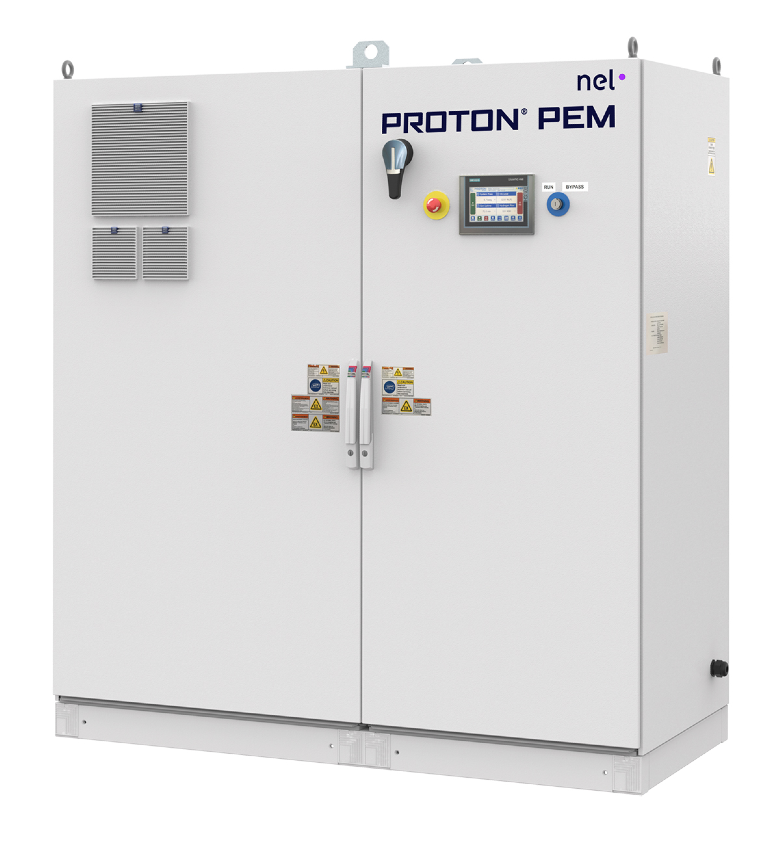 Interview conducted by Mychealla RiceAug 23 2016
Interview conducted by Mychealla RiceAug 23 2016In this interview, Dave Wolff from Nel Hydrogen talks to AZoM about the benefits of using Hydrogen Technology in Thin Film Deposition
Please explain Proton OnSite's hydrogen technology?
Nel Hydrogen uses Proton Exchange Membrane (PEM) water electrolysis to enable the production of very pure, pressurized, dry hydrogen using a compact, automated hydrogen generator. Nel’s hydrogen generators start in under 10 minutes, load-follow, and contain virtually no hazardous hydrogen inventory.
As compared with older technologies, PEM water electrolysis makes purer hydrogen, with higher pressure capability, with less hydrogen inventory, using more compact and reliable equipment.
Please describe thin film deposition? Can you tell us what it is used for?
Thin film deposition is the underlying technology behind many of today’s breakthrough products. Thin film deposition adds one or many atom-thin layers of material onto and into a bulk substrate material that serves as a backbone. These layers of specialized atoms can provide sometimes spectacular performance benefits beyond the capability of the uncoated component.
Products made by thin film deposition include metalized reflective windows that pass light but reject heat, gas turbine blades that don’t melt even at firing temperatures well above their melting point, semiconductor devices that enable lasers, LEDs, and ultrafast computing and communications, and gem quality diamonds of virtually any size grown from a tiny diamond seed.
How is hydrogen used in thin film deposition?
Hydrogen is widely employed in thin film deposition as a carrier gas, to transport the deposition materials into a vacuum chamber where the deposition takes place. Hydrogen is favored for its electrical and chemical properties, which help ensure that only the intended reactions take place.
Some studies have suggested that hydrogen takes part in the reactions, facilitating favorable reactions over unintended reactions.
Why does Nel’s hydrogen generation technology offer advantages to thin film deposition processes?
Hydrogen used for thin film deposition must be very pure, in order to prevent side reactions that damage the quality of the deposited thin film. Additionally, Nel's hydrogen generators produce virtually any quantity of hydrogen for thin films, without the need for hydrogen storage, considerably easing the safety and compliance burden for the process operator.

Does hydrogen meet the economic needs of thin film producers?
Hydrogen is a good match to the most important economic drivers affecting thin film producers. Overall, the price of hydrogen is one of the cheapest cost factors in a thin film operation. The hydrogen-related factors that drive costs for thin film producers include purification, personnel involvement in hydrogen supply, facility safety systems, and compliance costs due to hazardous material inventory.
All of these costs are reduced by the use of PEM water electrolysis versus other production technologies or stored delivered hydrogen. From the standpoint of thin film producers, hydrogen generated on-site, via PEM water electrolysis technology, is the least expensive way to access the multiple benefits of near-zero inventory, high purity, process pressure and well-characterized impurities.
What types of organizations are using Nel’s hydrogen generation technology for thin films?
Nel’s hydrogen generation technology is widely employed among the innovators producing advanced LEDs that yield light used for disinfection and purification. Many producers of grown diamonds employ Nel hydrogen generators. In both cases, Nel hydrogen generators provide all the hydrogen needed, but without adding to the facility burden of flammable or hazardous materials, enabling these producers to operate safely in normal industrial laboratory facilities. Nel’s larger models of hydrogen generators are seeing increased use in the production of extreme high performance abrasion and heat resistant parts for energy and transportation applications. Nel has customers worldwide for thin film applications.
Do Nel’s generators produce hydrogen with the right characteristics for advanced thin film deposition?
Nel’s hydrogen generators can be highly advantageous for thin film producers for many reasons. While the produced hydrogen is very pure at 99.9995+% purity, many thin film applicators will want to purify it further to ensure the best possible coating integrity. The hydrogen generated by Nel’s equipment is supplied at 200 or higher psig (13 barg or more). It can be easily purified using palladium purification or chemical getters while still maintaining enough pressure to suit the process.
Also, since Nel’s generators produce hydrogen from purified water with no chemicals added, the tiny amount of impurities that exist are well characterized since they arise only from the water itself and a tiny amount of dissolved air in the water. The impurities that are present are easily removed using common purification technologies.
What might the future look like for thin film deposition?
Thin film technologies have created revolutionary products already, and there are many more innovations to come. From healthcare, to transportation, to computing and communications, thin film products have upped the performance standard. Now that the advantages are understood, research proceeds to make even more advanced products, and also to bring down the premium cost of thin film products through innovation.
These products will advance the capabilities of cell phones, hearing aids and sensors for autonomous vehicles, will enable continued light weighting of automobiles to achieve greater mileage, will facilitate ever-higher efficiency in power plants and will make economically viable windows that can be made transparent or opaque with the flip of a switch.
There was even announcement for a film deposited on the inside of plastic squeeze bottles so that the contents such as ketchup, or lotion, or medication would fully dispense, leaving an empty container with no product clinging to the walls.
About Dave Wolff
Dave Wolff has over 35 years of sales, project engineering, industrial gas generation and application engineering experience. He has been a Regional Manager at Nel Hydrogen since 1999, responsible for sales management in the Eastern United States. Dave has an extensive background in hydrogen generation at large and small scale, hydrogen distribution, storage and industrial utilization, and has application knowledge across a diverse range of industries.

Disclaimer: The views expressed here are those of the interviewee and do not necessarily represent the views of AZoM.com Limited (T/A) AZoNetwork, the owner and operator of this website. This disclaimer forms part of the Terms and Conditions of use of this website.